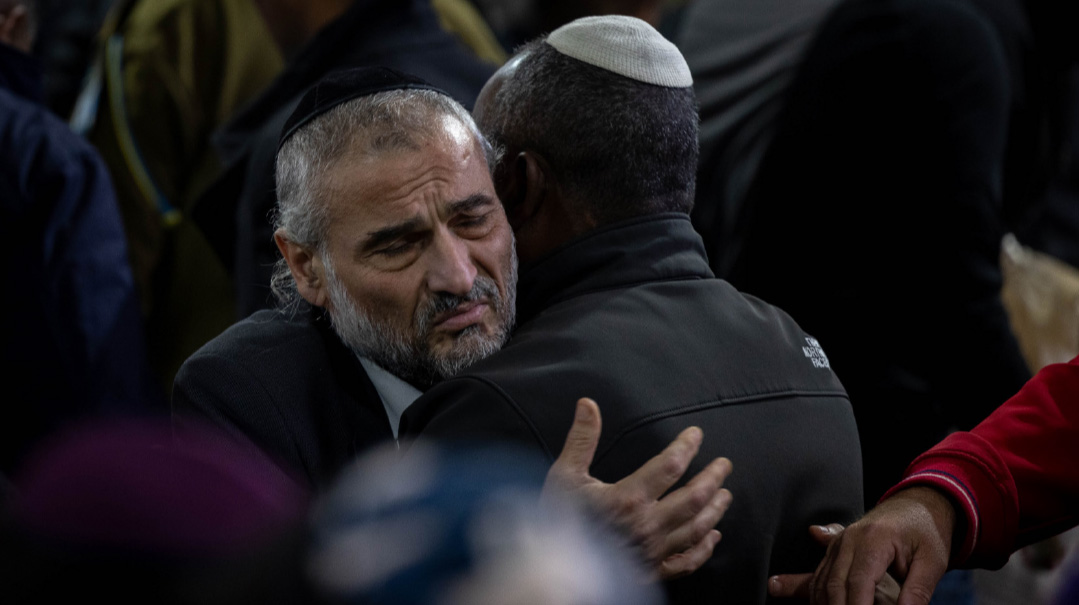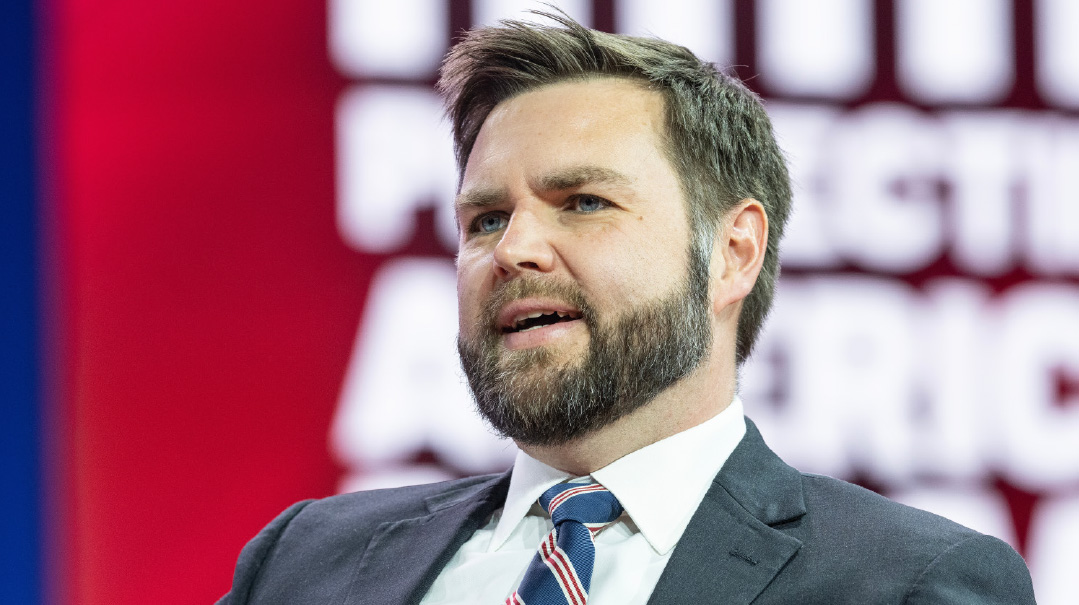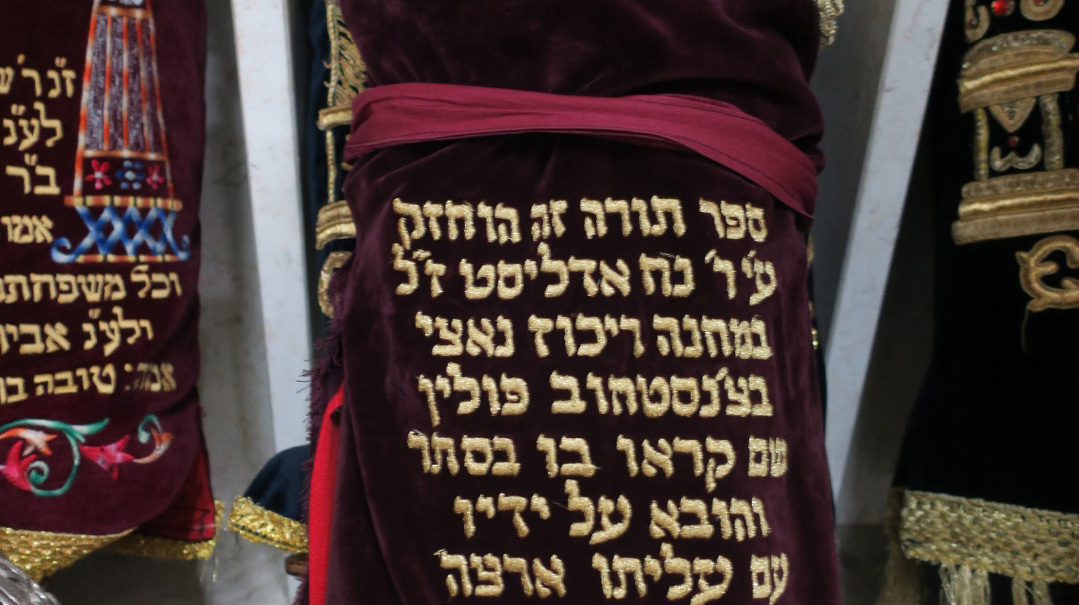A Shabbos B’yachad

The potential results every time two Jews from across societal or religious lines reach out and connect with one another

Photo: Flash90
MY wife and I spent last Shabbos at Jerusalem’s Waldorf-Astoria Hotel together with close to a hundred relatives of Israeli Jews being held captive by Hamas. The event was hosted by Kesher Yehudi, and the fact that it took place at all is testimony to the potential results every time two Jews from across societal or religious lines reach out and connect with one another.
Two or three weeks after October 7, a video of Shelly Shem-Tov, the mother of Omer, shrieking (yes, shrieking) about the need for unity went viral. I have quoted her words before, but they are worthy of being quoted once again: “We are all brothers! Brothers! Unite. My Omer was not kidnapped stam. But because for an entire year, we have been warring with one another. Enough! Enough!”
When Tzila Schneider, the founder and director of Kesher Yehudi, saw the video, it struck a very deep chord within her, as she has made it her mission for almost 15 years to bring the religious extremes of Israeli society together around their shared heritage of Torah.
So Mrs. Schneider made her way to Tel Aviv to the headquarters of the parents of the captives, together with a handful of senior staffers of Kesher Yehudi, just to hug the mothers of the captives and express their support. The Kesher Yehudi staff did not know how they would be received, but they were greeted warmly and with expressions of delight that they had come, and were invited to come again.
Over time, Mrs. Schneider and Shelly Shem-Tov developed a relationship. Mrs. Schneider told her new friend that Kesher Yehudi was sponsoring a night of tefillah on Erev Rosh Chodesh Shevat at Binyanei Ha’umah in Jerusalem for the soldiers in combat and the captives, and invited her to join. The latter demurred at first, on the grounds that she was scheduled to be part of a march to the Erez checkpoint that day.
But Tzili told her, “You’ve tried the marches. You’ve met with UN ambassadors from various countries, etc. And so far, nothing. Why not try something different?”
In the end she prevailed upon Shelly to join 3,000 other Jewish women in a night of tefillah.
When the evening was over, Shelly told her that she had been overwhelmed by the sight of 3,000 women shedding copious tears and offering heartfelt tefillos for the captives and for the soldiers fighting in Gaza. It was, she said, the first time she had experienced kedushah.
Mrs. Schneider gave Shelly a large sefer Tehillim, which now sits on the bed of the latter’s son Omer. Shelly begins each day with a perek of Tehillim from that sefer.
The next time Mrs. Schneider went to visit Shelly at the headquarters of the families of captives, after the leil tefillah, she took with her Rabbanit Yaffa Deri, whose warmth overflows. The three discussed the idea of a Shabbat of achdut, bringing together the families of captives and members of the chareidi community. Again, Mrs. Schneider pressed the point that the families had explored every avenue, and that it was time to besiege HaKadosh Baruch Hu, Who eagerly awaits the return of His children to Him.
Eventually, they settled on a date just ten days away. But unable to wait, Shelly’s friend Shir asked Mrs. Schneider if she could join her family for Shabbos. (In the end, she was too sick to do so, but reported that she had not gotten out of her bed all Shabbat and so had kept Shabbat.)
Over those ten days, Shelly kept adding more and more family members willing to explore spending an entire Shabbat k’hilchaso — over 90 in all. And she secured generous funding from the organization of hostage families, which sponsors a wide range of activities for the families.
I CONFESS that I was not without my misgivings about the Shabbos. Many of the family members have placed everything else aside since their child or spouse was abducted in the effort to secure their release. Others have returned to work, as they told us in private conversations around the Shabbos tables, but only in order to provide some measure of distraction from the heavy feelings of dread and sadness that accompany them constantly.
Chagai Angrest, the father of IDF soldier Matan Angrest, who was abducted as he and two fellow soldiers escaped their burning tank, spoke of the need to “be busy every minute of every day in order to distract oneself from the deep, dark, horrible thoughts, the sadness and the worry.”
Not having experienced living with the knowledge that one’s child or spouse is at every moment in mortal danger, I had no idea how to speak to the hostage family members: Would the normal forms of conversation upon meeting new people seem to them like a betrayal of their loved ones? Are light-hearted comments appropriate? Does even a smile betray a lack of understanding of what they are going through?
And I was worried that we, the chareidim, would appear overeager, as if our intention was to turn the nonreligious among the hostage families — by far the majority — into shomrei Shabbat, rather than just express our support and desire to share the Shabbat experience together. My fears on that score were only heightened when a sad-looking man dressed entirely in black and wearing a T-shirt with a picture of his kidnapped son (as were many family members) was swept up in the dancing between Minchah and Kabbalat Shabbat — somewhat reluctantly, it seemed to me.
I need not have worried on that score. In the final circle of all the participants at the end of Shabbos, he stood up and described his experience: “A perfect day. A perfect Shabbat. One that I had never experienced before. And to do the entire Shabbat according to halachah was just amazing. I feel drawn to it.”
A mother of a hostage, also experiencing her first full Shabbat, said, “I had a day of peaceful quiet for the first time since October 7.”
Another concern of mine was that I had spent Erev Shabbos writing last week’s piece, “Not at Any Price,” in which I rejected the notion that the return of the hostages is justified at any cost. While I have no criticism of parents or spouses of captives who take that position, I feared that I would be lectured about the failures of the government to offer a return of all Palestinian prisoners and a long cease-fire.
Again, I need not have worried. I did not hear one word of politics or discussion of what the government should do all Shabbos.
IT TURNS OUT that the major thing that the hostage families seek from us is our empathy for their situation and prayers for their loved ones’ return. And that empathy only grew as a consequence of meeting the hostage families in person and listening to them describe their loved ones in captivity and their own anguish.
Over Shabbos I learned a new Hebrew word, “b’yachad” used as a noun, and meaning support, connection, togetherness. At a Shabbos afternoon panel of four mothers and one spouse, one of the mothers described how she was strengthened and moved by “the b’yachad of being joined for Shabbos by 400 Jews in the Chabad shul of Tenafly, New Jersey.”
Again and again, the relatives spoke of the power of discovering that they are part of a family — the Jewish family — that cares deeply about them. One of the mothers on the panel described her misgivings prior to Shabbos due to the fact that she is not religiously observant. But all those fears melted away when Rabbanit Yaffa Deri embraced her as she entered the hotel.
The feeling of being embraced, both literally and figuratively, by their fellow Jews, has drawn the family members to greater feelings of pride in being members of the Jewish People and the desire to express that membership through mitzvos and Jewish ritual.
I was told after the event that the Shabbos had two emotional highlights, neither of which I observed personally. The first was the fervent tefillos and tears accompanying the Shabbos candle-lighting. The second was when the sefer Torah was brought through the women’s section, after Krias HaTorah. The women would not let it pass, as they each rushed to kiss it.
Aviva Siegel, a freed hostage who had been kidnapped from Kibbutz Kfar Azah along with her husband Keith, who remains in captivity, related how she had always sympathized with the Gazans and gone out of her way to help them. But when she saw a crippled resident of Gaza, hobbling on two crutches, nevertheless making the effort to enter her kibbutz to witness the suffering of the Jews and to plunder their homes, her only thought was how proud she was to be Jewish and not one motivated by such inhumanity and hatred.
A devar Torah given by Rabbanit Deri after the panel discussion captured the essence of the Shabbos. At the sneh, Hashem told Moshe Rabbeinu, “the cry of Bnei Yisrael has come before Me, v’gam [and also] I have seen the pressure with which the Egyptians are oppressing them” (Shemos 3:9).
What, she asked, is the gam? Who besides HaKadosh Baruch Hu has also heard their cries and seen their oppression? Rabbanit Deri answered, “Only when Bnei Yisrael cried out not only from their own suffering but from the pain of their fellow Jews — i.e., they ‘heard’ and ‘saw’ the suffering of their fellow slaves, did Hashem fully hear their cries and see their oppression. And so today, the more we feel the pain of our fellow Jews, the more powerful our collective prayers on their behalf.”
THERE WAS A REMARKABLE INTEGRATION of the messages of the speakers over Shabbos and the experience of Shabbos itself. Rabbi Avraham Greenbaum, the director of Keren Wolfson in Israel, spoke before Maariv. He related that he had recently been in Williamsburg for the first time, and encountered a very feisty community. In the space of a few hours, there were no less than three protest demonstrations. Yet when he entered a shul for Minchah, he found a tzibbur completely united in reciting Tehillim for the captives and IDF soldiers. Another example of the “b’yachad” spoken about so frequently over Shabbos.
Rabbi Yisroel Goldwasser, a Gerrer chassid from Bnei Brak, who leads tours to historical sites, gave one of the finest talks I have ever heard, mixing pathos and humor, and speaking rapid-fire without ever stumbling or hesitating, about the sacrifices Jews have made for Shabbos over the millennia. But the proof of his effectiveness lay not in his rhetorical abilities, as extraordinary as they are, but in the fact that most of those assembled for Shabbos stayed up for another three hours at an oneg Shabbos talking and getting to know one another.
Rabbi Kalman Ber, the chief rabbi of Netanya, placed our current travails with the Palestinians in historical context in one of his presentations. Then as now, the Philistines’ greatest desire was to prevent the Jewish People from establishing a homeland, not so much to build one of their own. That is why the servants of Avimelech stopped up the wells Avraham had dug, and did so again after Yitzchak dug them a second time.
Then he contrasted the approach of Shaul Hamelech, as described in Tanach, with that of Dovid Hamelech. The former entered into negotiations with the Philistines, and, in general, led Israel b’derech hateva. Dovid Hamelech, by contrast, followed the path by which we have survived until today: “These with their chariots, and these with their steeds, but we, in the Name of Hashem, our G-d, call out” (Tehillim 20:8).
That was precisely the message with which Mrs. Schneider initially encouraged Shelly Shem-Tov to gather her friends for a Shabbos of brotherhood. And a day later, when the news broke of the daring rescue in Rafah of two Israeli captives, Mrs. Schneider’s reaction was that of someone who had expected something of that nature all long: “How could so many Jews gathering to keep Shabbos together not have opened up the gates of Heaven to our prayers?”
Getting to know previously unknown siblings turned out to be exciting for all those involved, from both sides of the family. Despite having brought all the hostage families, even Shelly Shem-Tov could not have anticipated what would happen: “Now that Shabbos is over, it’s hard for me to describe in words the amount of love and unity that was present here — it makes me so emotional, I had no idea what a big, connecting, unifying event would turn out to be. The connection is one that we need to have for generations.”
One of the Kesher Yehudi volunteers told the mother who had expressed her initial concerns about being thrust together with religious Jews that she was “leaving a changed person.”
To which that mother, Meirav Leshem Gonen, replied, “We all are.”
(Originally featured in Mishpacha, Issue 1000. Yonoson Rosenblum may be contacted directly at rosenblum@mishpacha.com)
Oops! We could not locate your form.







